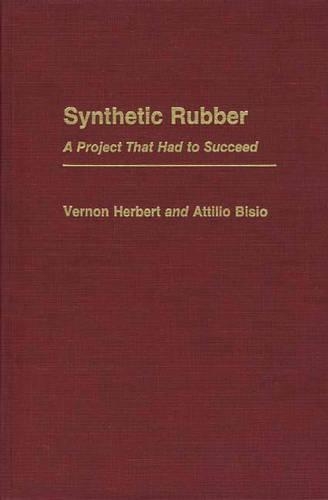
Synthetic Rubber: A Project That Had to Succeed
(Hardback)
Publishing Details
Synthetic Rubber: A Project That Had to Succeed
By (Author) Attilio Bisio
By (author) Vernon D. Herbert
Bloomsbury Publishing PLC
Praeger Publishers Inc
11th December 1985
United States
Classifications
Tertiary Education
Non Fiction
678.72
Physical Properties
Hardback
258
Width 156mm, Height 235mm
454g
Description
The authors recount how the synthetic rubber industry was created virtually overnight following the bombing of Pearl Harbor. They examine early attempts to extend natural rubber reserves. The rest of the story is that of the full scale effort by government, industry, and academia to develop a viable alternative to natural rubber within a short time and on an economically sound basis. The authors also provide an account of what has happened to the synthetic rubber industry between the end of the war and 1980, identify some lessons that can be learned from the synthetic rubber experience for government-industry programs, and draw parallels between the rubber dependency of the 1940s and the energy dependency of the 1980s.
Reviews
On the eve of WW II, the US was almost totally dependent upon the Far East for natural rubber essential to industry and mechanized warfare, a lifeline severed by the Japanese within weeks after Pearl Harbor. Victory required that a synthetic substitute be produced at once and on a massive scale. The story of the Project That Had to Succeed, ' the new industry it engendered, and the difficulties attending its birth is presented in detail for the first time, establishing this as a standard work for researchers in fields touching on industrial development, technology, and government. The authors ... focus on the wartime years, with a preliminary sketch of the prior development of the rubber industry and a brief review bringing the new synthetic trade up to date. Nonspecialists should have little difficulty with the style and content, as purely technical details have been largely bypassed in favor of an account of the organizational underpinnings of the project.... References and a brief bibliographical essay are adequate guides to further information.-Choice
"On the eve of WW II, the US was almost totally dependent upon the Far East for natural rubber essential to industry and mechanized warfare, a lifeline severed by the Japanese within weeks after Pearl Harbor. Victory required that a synthetic substitute be produced at once and on a massive scale. The story of the Project That Had to Succeed, ' the new industry it engendered, and the difficulties attending its birth is presented in detail for the first time, establishing this as a standard work for researchers in fields touching on industrial development, technology, and government. The authors ... focus on the wartime years, with a preliminary sketch of the prior development of the rubber industry and a brief review bringing the new synthetic trade up to date. Nonspecialists should have little difficulty with the style and content, as purely technical details have been largely bypassed in favor of an account of the organizational underpinnings of the project.... References and a brief bibliographical essay are adequate guides to further information."-Choice
Author Bio
rbert /f Vernon io /f Attilio
